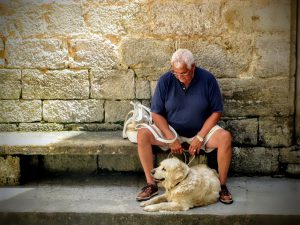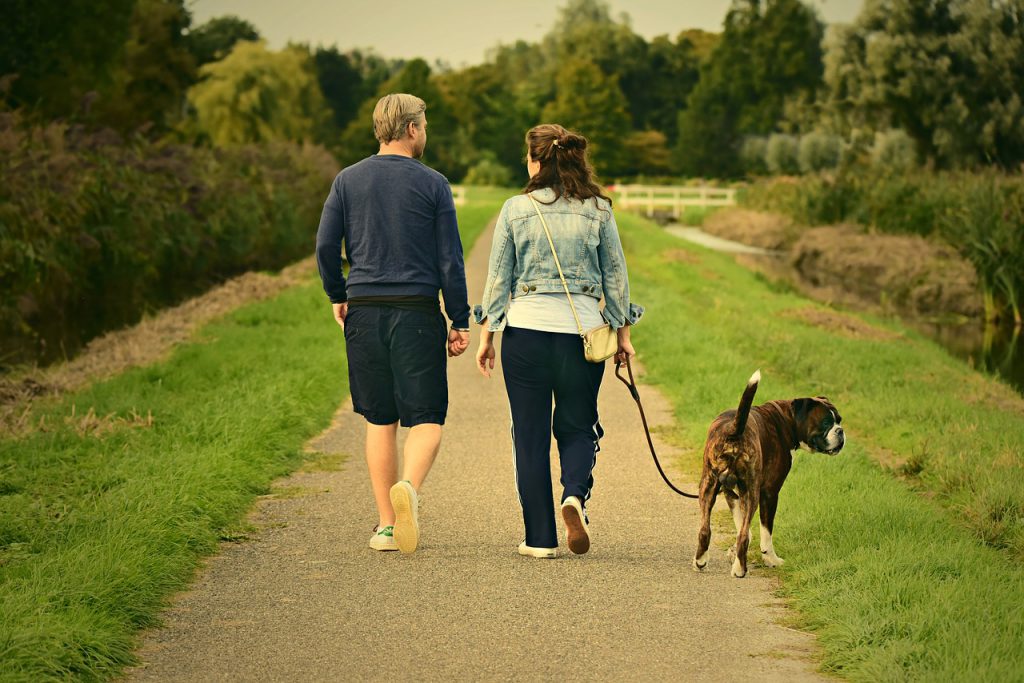Taking the dog for a walk is a healthy, wholesome activity for both humans and animals. It’s a great source of exercise, promotes bonding, and encourages a healthy lifestyle. Dogs love it too – but sometimes, special allowances have to be made for dogs who are past their prime.
How often should senior dogs exercise?

The answer to this question will be different for every dog. Dogs are individuals, with individual needs. Consider how often, and how far, your dog has been walked in the past month or year. If your dog is used to daily walks, keep to this schedule; but, don’t go as fast or as far as you would with a younger dog. Let your companion set the pace. If it looks like your dog is getting tired, or if exercising exacerbates their health problems, don’t push it. Stop immediately. Let your friend rest. Start small, building up to longer excursions over an extended period of time. Begin with a brief 10-minute stroll. Increase the distance over time; or, increase the number of short walks, giving your dog time to recuperate in-between. This is especially important for a dog who hasn’t been exercised in a while. Don’t underestimate the value of short walks. Something as simple as going up and down the street will bring joy to your senior dog, without putting too much stress on their body. Additionally, consider consulting with your veterinarian before launching your dog into a new workout regimen. A trained professional can give you personalized tips and advice, and help customize your dog’s new lifestyle to their individual needs.
Keep an eye out for poor weather conditions!

Watch out for poor weather conditions. If your dog has joint pain or arthritis, avoid walks on chilly, damp days. If going outside is unavoidable, gently massage the affected areas. Upon returning inside, give your dog a warm, dry place to recover. Similarly, avoid brisk, cold, windy days. Cold wind can cause inner-ear and balance issues for dogs, especially seniors. If your dog is obese or has joint/leg issues, consider aquatic-based therapy. This specialized physical therapy takes place in tubs or pools. Water eases the weight on the legs and makes it possible for an otherwise handicapped dog to exercise. Talk to your veterinarian to determine if aquatic therapy would benefit your senior companion.
Now that we’ve covered the basics, let’s take a look at some indoor exercises for dogs who may not be able to go on walks anymore. Engage your dog’s mind. Consider investing in things to entertain your dog. For example, you could purchase a toy that dispenses a treat when a button is pressed. Old dogs can learn new tricks. Mental stimulation will improve your dog’s quality of life, especially if they can’t go for walks. Whatever routine you choose, don’t overdo it. Stop at the first signs of pain or discomfort. Exercising should be beneficial and relaxing, and if your senior is struggling, you need to make allowances for them. Make exercising a team effort, with you and your dog slowly improving together.
If your dog’s health problems worsen, or pain persists even once your dog is rested up, seek professional help promptly. A vet can figure out the problem and prescribe the appropriate treatment. With their guidance, gentle walks and time, your senior dog will be living their best life.
Fon Jon Pet Care has been serving the San Diego area for more than 30 years. We can help you with your dog training, daycare, and boarding. Call us today at 858-280-3657





















